![负二项回归(第2版 英文版) [Negative Binomial Regression(Second Edition)]](https://pic.tinynews.org/12020585/584e340aNc1e18923.jpg)
负二项回归(第2版 英文版) [Negative Binomial Regression(Second Edition)] pdf epub mobi txt 电子书 下载 2025
- Regression
- Negative Binomial Regression
- Statistics
- Econometrics
- Data Analysis
- Biostatistics
- Generalized Linear Models
- Count Data
- Second Edition
- Applied Statistics

具体描述
内容简介
《负二项回归(第2版 英文版)》综述了计数模型和过度离散问题,重点讲述了负二项回归。第2版比第1版增加了好多内容,提供了理论背景以及应用State和R的计算实例,同时也提供了应用SAS和LIMDE的例子。该版本对任何需要选择、构建、阐释、比较评估计算模型的学者,尤其是负二项回归方面的,是一本不错的指导书。《负二项回归(第2版 英文版)》在概述了风险的性质、风险比和用在计数数据建模中的估计算法的本质,接着又对泊松模型进行了详尽的分析。
目录
Preface to the second edition1 Introduction
1.1 What is a negative binomial model?
1.2 A brief history of the negative binomial
1.3 Overview of the book
2 The concept of risk
2.1 Risk and 2×2 tables
2.2 Risk and 2×k tables
2.3 Risk ratio confidence intervals
2.4 Risk difference
2.5 The relationship of risk to odds ratios
2.6 Marginal probabilities: joint and conditional
3 Overview of count response models
3.1 Varieties of count response model
3.2 Estimation
3.3 Fit considerations
4 Methods of estimation
4.1 Derivation of the IRLS algorithm
4.1.1 Solving for □l or U— the gradient
4.1.2 Solving for □2L
4.1.3 The IRLS fitting algorithm
4.2 Newton—Raphson algorithms
4.2.1 Derivation of the Newton—Raphson
4.2.2 GLM with OIM
4.2.3 Parameterizing from/z to x'β
4.2.4 Maximum likelihood estimators
5 Assessment of count models
5.1 Residuals for count response models
5.2 Model fit tests
5.2.1 Traditional fit tests
5.2.2 Information criteria fit tests
5.3 Validation models
6 Poisson regression
6.1 Derivation of the Poisson model
6.1.1 Derivation of the Poisson from the binomial distribution
6.1.2 Derivation of the Poisson model
6.2 Synthetic Poisson models
6.2.1 Construction of synthetic models
6.2.2 Changing response and predictor values
6.2.3 Changing multivariable predictor values
6.3 Example: Poisson model
6.3.1 Coefficient parameterization
6.3.2 Incidence rate ratio parameterization
6.4 Predicted counts
6.5 Effects plots
6.6 Marginal effects, elasticities, and discrete change
6.6.1 Marginal effects for Poisson and negative binomial effects models
6.6.2 Discrete change for Poisson and negative binomial models
6.7 Parameterization as a rate model
6.7.1 Exposure in time and area
6.7.2 Synthetic Poisson with offset
6.7.3 Example
7 Overdispersion
7.1 What is overdispersion?
7.2 Handling apparent overdispersion
7.2.1 Creation of a simulated base Poisson model
7.2.2 Delete a predictor
7.2.3 Outliers in data
7.2.4 Creation of interaction
7.2.5 Testing the predictor scale
7.2.6 Testing the link
7.3 Methods of handling real overdispersion
7.3.1 Scaling of standard errors/quasi-Poisson
7.3.2 Quasi-likelihood variance multipliers
7.3.3 Robust variance estimators
7.3.4 Bootstrapped and jackknifed standard errors
7.4 Tests of overdispersion
7.4.1 Score and Lagrange multiplier tests
7.4.2 Boundary likelihood ratio test
7.4.3 Rp2 and Rpd2 tests for Poisson and negative binomial models
7.5 Negative binomial overdispersion
8 Negative binomial regression
8.1 Varieties of negative binomial
8.2 Derivation of the negative binomial
8.2.1 Poisson—gamma mixture model
8.2.2 Derivation of the GLM negative binomial
8.3 Negative binomial distributions
8.4 Negative binomial algorithms
8.4.1 NB-C: canonical negative binomial
8.4.2 NB2: expected information matrix
8.4.3 NB2: observed information matrix
8.4.4 NB2: R maximum likelihood function
9 Negative binomial regression: modeling
9.1 Poisson versus negative binomial
9.2 Synthetic negative binomial
9.3 Marginal effects and discrete change
9.4 Binomial versus count models
9.5 Examples: negative binomial regression
Example 1:Modeling number of marital affairs
Example 2:Heart procedures
Example 3:Titanic survival data
Example 4:Health reform data
10 Alternative variance parameterizations
10.1 Geometric regression: NB α=1
10.1.1 Derivation of the geometric
10.1.2 Synthetic geometric models
10.1.3 Using the geometric model
10.1.4 The canonical geometric model
10.2 NB 1: The linear negative binomial model
10.2.1 NBI as QL-Poisson
10.2.2 Derivation of NB1
10.2.3 Modeling with NB1
10.2.4 NB I:R maximum likelihood function
10.3 NB-C: Canonical negative binomial regression
10.3.1 NB-C overview and formulae
10.3.2 Synthetic NB—C models
10.3.3 NB-C models
10.4 NB-H: Heterogeneous negative binomial regression
10.5 The NB-P model: generalized negative binomial
10.6 Generalized Waring regression
10.7 Bivariate negative binomial
10.8 Generalized Poisson regression
10.9 Poisson inverse Gaussian regression (PIG)
10.10 Other count models
11 Problems with zero counts
11.1 Zero-truncated count models
11.2 Hurdle models
11.2.1 Theory and formulae for hurdle models
11.2.2 Synthetic hurdle models
11.2.3 Applications
11.2.4 Marginal effects
11.3 Zero-inflated negative binomial models
11.3.1 Overview of ZIP/ZINB models
11.3.2 ZINB algorithms
11.3.3 Applications
11.3.4 Zero-altered negative binomial
11.3.5 Tests of comparative fit
11.3.6 ZINB marginal effects
11.4 Comparison of models
12 Censored and truncated count models
12.1 Censored and truncated models-econometric parameterization
12.1.1 Truncation
12.1.2 Censored models
12.2 Censored Poisson and NB2 models-survival parameterization
13 Handling endogeneity and latent class models
13.1 Finite mixture models
13.1.1 Basics of finite mixture modeling
13.1.2 Synthetic finite mixture models
13.2 Dealing with endogeneity and latent class models
13.2.1 Problems related to endogeneity
13.2.2 Two-stage instrumental variables approach
13.2.3 Generalized method of moments (GMM)
13.2.4 NB2 with an endogenous multinomial treatment variable
13.2.5 Endogeneity resulting from measurement error
13.3 Sample selection and stratification
13.3.1 Negative binomial with endogenous stratification
13.3.2 Sample selection models
13.3.3 Endogenous switching models
13.4 Quantile count models
14 Count panel models
14.1 Overview of count panel models
14.2 Generalized estimating equations: negative binomial
14.2.1 The GEE algorithm
14.2.2 GEE correlation structures
14.2.3 Negative binomial GEE models
14.2.4 GEE goodness-of-fit
14.2.5 GEE marginal effects
14.3 Unconditional fixed-effects negative binomial model
14.4 Conditional fixed-effects negative binomial model
14.5 Random-effects negative binomial
14.6 Mixed-effects negative binomial models
14.6.1 Random-intercept negative binomial models
14.6.2 Non-parametric random-intercept negative binomial
14.6.3 Random-coefficient negative binomial models
14.7 Multilevel models
15 Bayesian negative binomial models
15.1 Bayesian versus frequentist methodology
15.2 The logic of Bayesian regression estimation
15.3 Applications
Appendix A:Constructing and interpreting interaction terms
Appendix B:Data sets, commands, functions
References and further reading
Index
用户评价
我最近一直在研究一些关于传染病传播的建模问题,寻找合适的统计模型来分析患病人数。在同事的推荐下,我找到了这本《Negative Binomial Regression(Second Edition)》。老实说,我之前对负二项回归的了解仅限于一些基础概念,但这本书彻底刷新了我的认知。它不仅详细介绍了负二项回归模型本身,还深入探讨了它在处理零膨胀数据、混合分布模型等复杂场景下的应用。书中的案例分析非常贴合实际,我从中学习到了如何构建、评估和解释模型的各个步骤,并且对模型诊断和模型改进有了更深的理解。 最让我印象深刻的是,作者在处理实际问题时,展现出的严谨性和实用性。他并没有简单地罗列公式,而是着重于如何将理论模型有效地应用于解决真实世界的问题。例如,在关于森林火灾风险的案例研究中,作者详细阐述了如何选择合适的协变量,如何处理空间自相关性,以及如何解读模型结果以指导决策。这本书为我提供了非常有价值的工具和方法论,让我对如何更有效地分析计数数据有了全新的认识。
评分作为一名统计学的学生,我在课程中接触了各种回归模型,但感觉在计数数据分析方面总是缺乏系统性的认识。偶然的机会,我发现了这本《Negative Binomial Regression(Second Edition)》。这本书为我打开了一个全新的视角。作者以一种非常有吸引力的方式,将抽象的统计理论与实际应用紧密结合。我特别喜欢它在解释每一个模型概念时,都辅以清晰的数学推导和直观的图示,这大大加深了我对模型内在机制的理解。 第二版在保留原有内容的基础上,进一步扩展了模型的应用范围,例如在生态学中分析物种数量,在医学中分析疾病发病率等。书中提供的各种模型比较方法,让我能够根据具体的数据特征选择最合适的模型。而且,作者在写作中展现出的对统计学思想的深刻洞察,让我不仅学会了如何使用负二项回归,更培养了我对数据和模型之间关系的批判性思维。这本书无疑是提升我对计数数据分析理解水平的绝佳教材。
评分我对生物统计学中的一些计数数据分析感到困惑,特别是在处理基因表达水平、细胞计数等问题时。朋友推荐了这本《Negative Binomial Regression(Second Edition)》,说它是这方面的权威著作。事实证明,朋友的推荐非常准确。这本书以一种非常易于理解的方式,深入浅出地介绍了负二项回归模型的各个方面。我特别欣赏它对模型诊断和模型改进策略的详细讲解。 书中关于如何识别和处理模型假设违背的情况,例如异常值和协变量的非线性关系,提供了非常实用的方法。作者还强调了模型解释的重要性,并提供了多种可视化工具来帮助读者更好地理解模型结果。我从这本书中学到了如何构建一个健壮的负二项回归模型,并且能够自信地解释模型的发现,这对于我在科学研究中做出可靠的推断至关重要。这本书对于任何需要深入理解计数数据分析的领域的研究者来说,都是一本不可或缺的参考书。
评分读完《负二项回归(第2版)》的英文原版,我真的被它的深度和广度所震撼。这本书不仅仅是对负二项回归模型的一次更新,更像是一次对计数数据分析的全面梳理。作者在第二版中,不仅保留了原有的精华,更是加入了大量最新的研究进展和更具实践意义的案例。我特别喜欢它对模型假设的深入探讨,以及不同情境下模型的选择和解释。书中大量的R语言代码示例,对于我这样的实践者来说,简直是福音。我可以直接套用,然后根据自己的数据进行调整,大大缩短了学习曲线。 一开始我还有点担心英文原版可能会比较枯燥,但事实证明我的担忧是多余的。作者的写作风格非常清晰流畅,虽然是学术著作,但并没有让人感到难以理解。相反,他用了很多直观的比喻和生动的例子来解释复杂的概念,比如在解释过离散(overdispersion)问题时,他竟然用了一个关于“小镇居民数量增长”的故事,瞬间就明白了。而且,对于那些对统计理论有更高追求的读者,书中也提供了详尽的数学推导和参考文献,可以让你深入挖掘。这本书的排版也非常精美,阅读体验很棒,绝对是值得反复研读的经典之作。
评分作为一名在市场调研领域工作的统计师,我经常需要分析消费者购买次数等计数型数据。过去,我通常依赖泊松回归,但总是遇到数据过于离散的问题,导致模型结果不可靠。在翻阅了《Negative Binomial Regression(Second Edition)》后,我才真正体会到负二项回归的强大之处。这本书系统地讲解了负二项回归的理论基础、模型假设以及与泊松回归的关键区别。它不仅解释了为什么负二项回归在处理高离散度数据时表现更优,还提供了详细的估计方法和模型选择的准则。 书中的第二个版本尤其让我欣喜,因为它增加了不少关于广义泊松模型、零膨胀负二项模型等更高级的主题。这对于我处理包含大量零值(比如从未购买过的消费者)和高变异性的实际数据非常有帮助。作者还提供了大量的R代码片段,可以轻松地在自己的分析中实现这些模型。这本书的条理清晰,逻辑严密,让我能够循序渐进地掌握负二项回归的精髓,并将其成功应用于我的工作中,显著提升了分析的准确性和可靠性。
相关图书
本站所有内容均为互联网搜索引擎提供的公开搜索信息,本站不存储任何数据与内容,任何内容与数据均与本站无关,如有需要请联系相关搜索引擎包括但不限于百度,google,bing,sogou 等
© 2025 book.tinynews.org All Rights Reserved. 静思书屋 版权所有

![草地土壤微生物学 [Grassland Soil Microbiology] pdf epub mobi 电子书 下载](https://pic.tinynews.org/12021838/57c9556dNbed2b477.jpg)




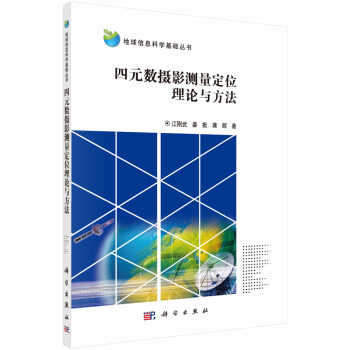
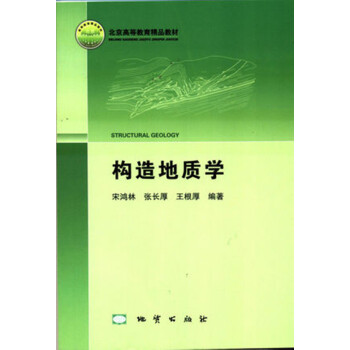
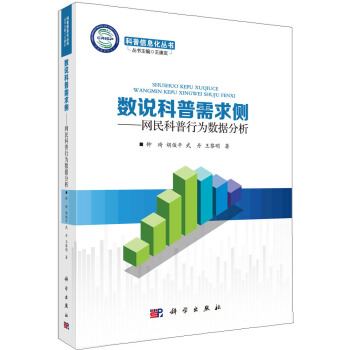
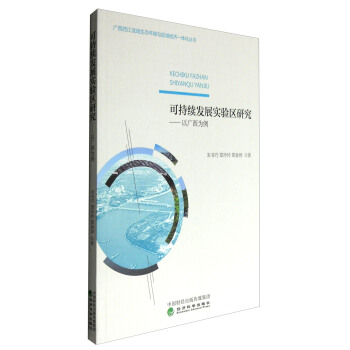
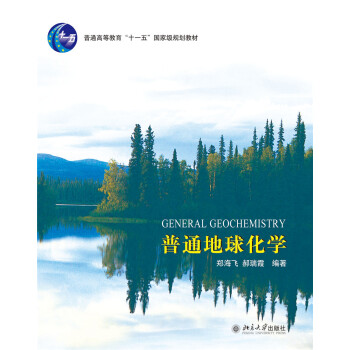
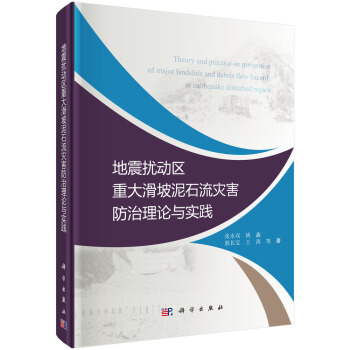







![微生物学实验技术(第二版) [Laboratory Manual of Microbiology] pdf epub mobi 电子书 下载](https://pic.tinynews.org/12033415/5885cc0aN37f64d29.jpg)
![动力系统VIII 奇异理论II:应用 [Dynamical Systems Ⅷ: Singularity Theory Ⅱ:Applications] pdf epub mobi 电子书 下载](https://pic.tinynews.org/12034545/5acf0779N450a4829.jpg)